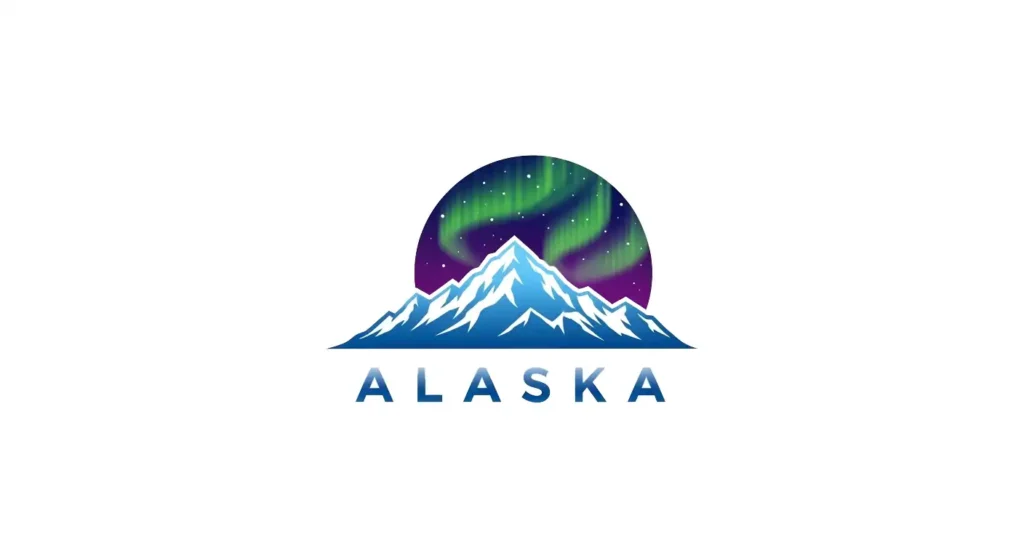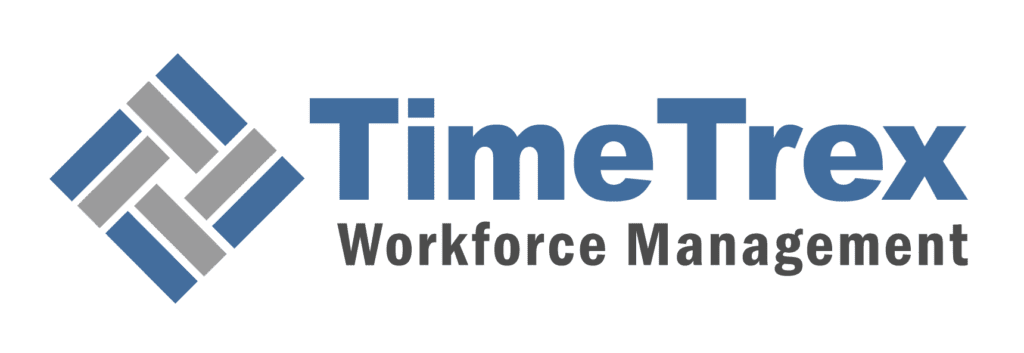
Alaska Payroll Tax: A Quick Guide for Small Businesses (2025)
For small business owners in Alaska, navigating the world of payroll taxes can feel like charting a course through icy waters. The state's unique tax landscape—most notably, the absence of a state personal income tax—simplifies some aspects of payroll but places immense importance on others. This guide provides a detailed analysis of Alaska's payroll tax system, focusing on your obligations for 2025 and offering insights to help you stay compliant and manage costs effectively.
On This Page
For 2025, Alaska employers must be acutely aware of the State Unemployment Insurance (SUI) tax parameters. The SUI taxable wage base is set at $51,700 per employee, and employer contribution rates range from 1.00% to 5.40% based on an experience rating. Employees also contribute at a rate of 0.50%. A significant factor for payroll budgeting is the statewide minimum wage increase to $13.00 per hour on July 1, 2025.
The good news is that Alaska's UI Trust Fund is financially robust, which suggests a stable SUI rate environment for the near future. However, this stability hinges on economic conditions and potential legislative changes. Diligent management of your SUI obligations is not just about compliance; it's a critical component of your financial strategy.
Understanding Alaska's Unique Payroll Tax Structure
Alaska stands apart from most U.S. states with a payroll tax system that is both simpler in one regard and more focused in another.
Absence of State Personal Income Tax
The most defining feature of Alaska's system is the lack of a personal income tax. For employers, this is a significant administrative relief. You are not required to:
- Register for a state income tax withholding account.
- Calculate, withhold, or remit state income taxes from employee paychecks.
- File state income tax withholding returns.
This eliminates a major layer of compliance that businesses in other states face, allowing you to focus your resources elsewhere.
Primary Focus: State Unemployment Insurance (SUI) Tax
With no state income tax, the State Unemployment Insurance (SUI) tax—officially called the Employment Security Tax in Alaska—becomes the principal state-level payroll tax. This tax is administered by the Alaska Department of Labor and Workforce Development (DOLWD) and serves two critical functions:
- Funding Unemployment Benefits: It accumulates funds to provide temporary financial aid to eligible workers who lose their jobs through no fault of their own.
- Supporting Workforce Training: A portion of employee contributions helps fund vital job training initiatives like the State Training and Employment Program (STEP) and the Technical Vocational Education Program (TVEP).
Because the SUI tax is the primary state payroll obligation, understanding and managing it is paramount. The system's experience-rating mechanism directly links your company's layoff history to your tax rate, making workforce stability a key factor in controlling your payroll costs.
Alaska State Unemployment Insurance (SUI) Tax Deep Dive – 2025
A detailed grasp of the SUI tax components is essential for accurate payroll and compliance. Here’s what you need to know for 2025.
2025 SUI Taxable Wage Base
For 2025, Alaska's SUI taxable wage base is $51,700 per employee. This means you pay SUI tax on the first $51,700 of wages for each employee during the calendar year. Any earnings above this cap are not subject to state unemployment tax.
Employer Contribution Rates
Your SUI rate depends on whether you are a new or experienced employer.
- New Employers: Businesses new to Alaska's SUI system are typically assigned a standard rate, which is often 1.00%. However, you must confirm your specific rate on the official "Contribution Rate Notice" you receive from the DOLWD after registering. This initial rate applies until you build enough employment history (typically four consecutive quarters) to qualify for an experience rating.
- Experienced Employers: If you have an established employment history, your SUI rate for 2025 will range from 1.00% to 5.40%. This variable rate is determined by your individual experience rating. The DOLWD mails a "Contribution Rate Notice" each December with your rate for the upcoming year. It's crucial to update your payroll system immediately to avoid over or underpayments.
Employee Contribution Rate
Employees also contribute to the SUI system. For 2025, the employee contribution rate is 0.50% of their taxable wages, up to the $51,700 wage base. Employers are responsible for withholding this from employee paychecks and remitting it to the state. The maximum an employee will contribute in 2025 is $258.50 ($51,700 x 0.0050).
| Component | 2025 Figure/Rate | Notes |
|---|---|---|
| Taxable Wage Base | $51,700 | Per employee, per year. |
| New Employer Rate | 1.00% (Typical) | Confirm with official DOLWD Rate Notice. |
| Experienced Employer Rate Range | 1.00% - 5.40% | Determined by experience rating. |
| Employee Contribution Rate | 0.50% | Withheld from employee wages. |
| Maximum Annual Employee Contribution | $258.50 | Calculated as $51,700 * 0.0050. |
Understanding the Experience Rating System
Alaska's experience rating system aims to fairly distribute unemployment costs. The core idea is that employers with a history of more layoffs (and thus more unemployment benefit claims) pay a higher tax rate. A key, unique factor in Alaska's formula is the Average Quarterly Decline Quotient (AQDQ), which measures your payroll stability from one quarter to the next. Businesses with significant seasonal fluctuations, like those in tourism or fishing, may see higher rates due to sharp payroll declines, even if annual employment is steady. This system incentivizes employers to maintain a stable workforce throughout the year.
| Year | Taxable Wage Base | Employee Rate | Max Annual Employee Contribution |
|---|---|---|---|
| 2025 | $51,700 | 0.50% | $258.50 |
| 2024 | $49,700 | 0.50% | $248.50 |
| 2023 | $47,100 | 0.51% | $240.21 |
| 2022 | $45,200 | 0.56% | $253.12 |
| 2021 | $43,600 | 0.50% | $218.00 |
| 2020 | $41,500 | 0.50% | $207.50 |
Federal Payroll Tax Obligations for Alaska Employers
Even without state income tax, Alaska employers are fully responsible for federal payroll taxes administered by the IRS.
Federal Income Tax (FIT) Withholding
You must withhold federal income tax from employee wages based on the information they provide on their Form W-4 and the current IRS withholding tables (found in IRS Publication 15-T).
Social Security and Medicare (FICA) Taxes
FICA taxes are a shared cost between employees and employers.
- Social Security: The rate is 6.2% for both the employee and employer on wages up to the annual wage base limit. For 2025, this limit is projected to be $160,200, but you must verify the official figure from the IRS in late 2024.
- Medicare: The rate is 1.45% for both the employee and employer on all covered wages, with no wage limit.
- Additional Medicare Tax: An extra 0.9% is withheld from employee wages exceeding $200,000 (for single filers). This is an employee-only tax; there is no employer match.
Federal Unemployment Tax Act (FUTA) Tax
This is an employer-only tax that works with the state SUI system. The gross FUTA rate is 6.0% on the first $7,000 of wages per employee. However, employers who pay their state SUI taxes on time and in full receive a massive credit of up to 5.4%. This credit effectively reduces the FUTA rate to 0.6%, for a maximum FUTA tax of just $42 per employee per year ($7,000 x 0.006). This makes timely SUI payments a critical financial strategy.
| Tax Type | Employee Rate | Employer Rate | 2025 Wage Base Limit |
|---|---|---|---|
| Federal Income Tax (FIT) | Varies (per W-4) | Withhold & Remit | N/A |
| Social Security | 6.2% | 6.2% | $160,200 (Projected; verify with IRS) |
| Medicare | 1.45% | 1.45% | No Limit |
| Additional Medicare | 0.9% on wages > $200K (Single) | None | Applies over thresholds |
| FUTA | None | 0.6% (Net) | $7,000 |
Compliance and Reporting Requirements
Strict adherence to reporting deadlines and procedures is essential to avoid costly penalties.
Initial Registration and New Hire Reporting
Any business hiring employees in Alaska must register with the DOLWD to get an SUI tax account number. You must also report all new and rehired employees to the Alaska New Hire Reporting Center, typically through the state's MyAlaska online portal.
Quarterly Reporting (Form TQ01C) and Deadlines
You must file Form TQ01C, Employer's Quarterly Contribution Report, and pay the corresponding SUI taxes every quarter. A report is required even if you paid no wages. The deadlines are strict:
| Quarter | Period Covered | Due Date |
|---|---|---|
| Q1 | Jan 1 - Mar 31 | April 30 |
| Q2 | Apr 1 - Jun 30 | July 31 |
| Q3 | Jul 1 - Sep 30 | October 31 |
| Q4 | Oct 1 - Dec 31 | January 31 (next year) |
The DOLWD encourages all employers to file and pay online via its TaxWeb application on the MyAlaska portal. Online filing is mandatory for businesses with 50 or more employees.
Penalties and Common Mistakes
Failure to file or pay on time can result in interest and penalties, including the assignment of a high "Penalty Rate" (e.g., 5.4%). Common mistakes include:
- Worker Misclassification: Incorrectly classifying an employee as an independent contractor is a major risk. Alaska uses a strict "ABC test" to determine status.
- Using an Outdated SUI Rate: Always use the rate from your most current DOLWD notice.
- Prime Contractor Liability: Prime contractors can be held liable for a subcontractor's unpaid SUI taxes if they fail to get a Tax Clearance certificate.
Special Payroll Considerations
Certain situations require special attention to payroll rules.
Acquiring a Business (Successorship)
When buying a business, you may be held liable for the seller's unpaid SUI taxes. Due diligence is critical. You may also inherit the seller's SUI experience rating, which can be either a benefit (low rate) or a liability (high rate).
Employing Family Members
Whether wages paid to an owner's child are subject to SUI tax depends on the business structure (sole proprietorship, LLC, corporation) and the child's age. For example, a sole proprietor generally does not have to report wages paid to their child if the child is 17 or younger.
Casual Labor and Temporary Help
There is no "casual labor" exemption in Alaska. Wages paid for services that are part of your normal business operations are reportable for SUI, no matter how short the job or small the payment. This includes temporary and seasonal staff.
The Future of Alaska Payroll Taxes: Beyond 2025
UI Trust Fund Health and Future Rates
As of late 2023, Alaska's UI Trust Fund was exceptionally healthy, holding over $656 million—significantly more than the amount required for full solvency. This strong position suggests rate stability for the near future, barring a major economic downturn. The "fund solvency adjustment credit," which lowers employer rates when the fund is healthy, is likely to continue.
Economic and Legislative Trends
Two key trends to watch are:
- Minimum Wage Increases: The state minimum wage increases to $13.00/hour on July 1, 2025. This will directly increase payroll costs and total SUI-taxable wages for lower-wage workers.
- Legislative Activity: While no major SUI overhauls are currently on the immediate horizon, employers should always monitor the Alaska State Legislature for any changes to tax or employment laws.
Simplify Your Alaska Payroll with TimeTrex
Feeling overwhelmed by SUI rates, federal taxes, and quarterly deadlines? You don't have to manage it all alone. TimeTrex offers powerful, integrated payroll solutions designed to handle the complexities of Alaska's tax laws, ensuring you stay compliant and save time.
Use our free calculator to estimate your payroll tax obligations instantly.
Try the Alaska Payroll Tax CalculatorKey Resources and Contact Information
Bookmark these official resources to stay informed and get help when you need it.
Alaska Department of Labor and Workforce Development (DOLWD)
- Main Website: labor.alaska.gov/estax
- Juneau Central Office Phone: (907) 465-2757
- Toll-Free Phone: (888) 448-3527
- Email: esd.tax@alaska.gov
- Online Portals: Access TaxWeb for filing and the New Hire Reporting system via my.alaska.gov.
Internal Revenue Service (IRS)
- Main Website: www.irs.gov
- Key Publications: Publication 15 (Circular E), Employer's Tax Guide; and Publication 15-T, Federal Income Tax Withholding Methods.
Concluding Recommendations for Alaska Employers
Success with Alaska payroll taxes comes down to a proactive and informed approach. Here are our final recommendations:
- Implement Robust Systems: Use reliable payroll software or services to ensure accurate tracking and calculations.
- Prioritize Deadlines: Mark all federal and state filing and payment deadlines on your calendar. Timely SUI payments are key to securing the valuable FUTA tax credit.
- Actively Manage Your SUI Rate: Focus on employee retention and stable workforce management to help control your experience rating and lower your SUI tax costs over time.
- Classify Workers Correctly: Be absolutely certain about the difference between an employee and an independent contractor under Alaska's strict laws. When in doubt, err on the side of caution and classify as an employee.
- Leverage Official Resources: Regularly check the DOLWD and IRS websites and subscribe to employer newsletters to stay ahead of any changes.
By understanding Alaska's unique payroll landscape and staying diligent, you can ensure compliance, manage costs effectively, and focus on what you do best—running your small business.
Disclaimer: The content provided on this webpage is for informational purposes only and is not intended to be a substitute for professional advice. While we strive to ensure the accuracy and timeliness of the information presented here, the details may change over time or vary in different jurisdictions. Therefore, we do not guarantee the completeness, reliability, or absolute accuracy of this information. The information on this page should not be used as a basis for making legal, financial, or any other key decisions. We strongly advise consulting with a qualified professional or expert in the relevant field for specific advice, guidance, or services. By using this webpage, you acknowledge that the information is offered “as is” and that we are not liable for any errors, omissions, or inaccuracies in the content, nor for any actions taken based on the information provided. We shall not be held liable for any direct, indirect, incidental, consequential, or punitive damages arising out of your access to, use of, or reliance on any content on this page.
About The Author

Roger Wood
With a Baccalaureate of Science and advanced studies in business, Roger has successfully managed businesses across five continents. His extensive global experience and strategic insights contribute significantly to the success of TimeTrex. His expertise and dedication ensure we deliver top-notch solutions to our clients around the world.
Time To Clock-In
Start your 30-day free trial!
Experience the Ultimate Workforce Solution and Revolutionize Your Business Today
- Eliminate Errors
- Simple & Easy To Use
- Real-time Reporting

Saving businesses time and money through better workforce management since 2003.
Copyright © 2025 TimeTrex. All Rights Reserved.
